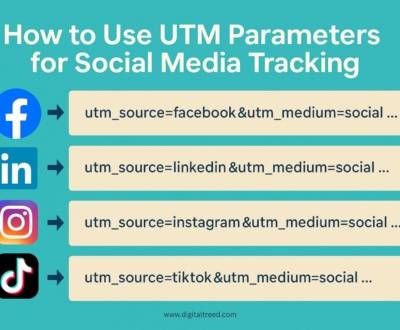Beating your SERP competition can be difficult, but it’s still possible. To reach the top of the SERP, you have to go through dozens of steps. One of the initial and most significant ones involves performing an expansive SERP analysis.
In this guide, we’ll describe what a SERP analysis is, what users wish to see in search results, how to analyze what your competitors are doing to reach the top, and how to use this knowledge to supercharge your SEO technique.
So, let’s dive in!
What is a SERP analysis?
The main objective of performing a SERP analysis is to achieve insights into the content that has high rankings on search engines. It can assist you learn why certain content is shown in response to certain search questions. By comprehending the SERP landscape, you can make knowledgeable decisions about content creation, keyword targeting, and on-page optimization. This can enhance your website’s visibility and assist you get more traffic from search engines.
What is a SERP competitor ranking analysis?
A SERP competitor ranking analysis concentrates on comparing your search engine results positions against those of your opponents for relevant keywords. This kind of analysis delivers insights into the SEO techniques and keywords your competitors are utilizing to earn their rankings. With this data, you can tailor your SEO measures more effectively, targeting places where your competitors may be weak or strengthening aspects of your plan where you already have a benefit
Read Also: Home Services SEO: A Simple Guide
How to find your top SERP competitors
- Compile a List of Your Key Keywords: Start by listing the keywords most appropriate to your business, products, or services. These should include both broad industry terms and more detailed phrases related to your offerings.
- Conduct Manual Searches: While tools present a comprehensive overview, nothing surpasses the accuracy of manually reviewing search engine results for your keywords. This can tell competitors that tools might overlook, particularly local competitors or niche sites.
- Analyze the Search Intent: For each keyword, review the search intent behind it. Is the user looking for a statement, trying to make a buy, or seeking a particular website? Comprehending this can help you determine competitors who are successfully addressing the same user requirements.
- Identify Common Competitors Across Keywords: Look for patterns in the data. Are there websites that emerge consistently across numerous keywords? These are your prior SERP competitors, as they are effectively targeting a comparable audience.
How to do a Google SERP analysis for you and for your competitors
- Identify Your Target Keywords: Begin with a complete list of keywords that are relevant to your business, products, or services. Include both expansive and specific terms that potential consumers might use to find your offerings.
- Use Google Search Console: For your website, Google Search Console is a valuable tool. It delivers data on your site’s performance in Google search results, indicating which keywords your site is ranking for, your positions for those keywords, and how often somebody clicks through to your site.
- Analyze the Top Ranking Pages: For each target keyword, perform a Google search and explore the top-ranking pages. Look at the kind of content that is ranking (blog posts, product pages, videos, etc.), the topics covered, and the depth of the content. This can provide you insights into what Google and searchers find useful.
- Check for SERP Features: Note any SERP features (such as featured snippets, details panels, local packs) that emerge for your target keywords. If your competitors are always appearing in these features, analyze what content or attributes might be contributing to their visibility.
Read Also: Top SEO Influencers To Follow
- Evaluate Competitors’ On-Page SEO: Look at the on-page SEO aspects of your competitors’ pages, including title tags, header tags, meta descriptions, and content structure. Comprehending how they optimize these factors can deliver clues on how to enhance your pages.
- Assess Content Quality and Relevance: Check the quality and relevance of the content on competitors’ pages. High-quality, appropriate content is more likely to rank well in Google. Think about how you can create content that meets or exceeds the benchmark set by your competitors.
- Analyze Backlink Profiles: Utilizing SEO tools like SEMrush, Ahrefs, or Moz, analyze the backlink profiles of the top-ranking pages. Backlinks from high-authority sites can greatly affect rankings, so learning who is linking to your competitors can guide your link-building method.
- Monitor User Experience (UX) Factors: Google places a strong focus on user experience, including page speed and mobile usability. Utilize tools like Google’s PageSpeed Insights and Mobile-Friendly Test to consider how your site and your competitors’ sites act in these areas.
- Implement Findings: Based on your analysis, determine areas for progress on your site. This might involve optimizing on-page factors, enhancing content quality, improving mobile usability, or following backlinks from authoritative sites.
Conclusion
To grow in search, you need a keen knowledge of your SERP competitors.
After finishing these steps, you will be mindful of the strengths and weaknesses of each of your opponents. You’ll also comprehend the search landscape and be able to fulfill your potential users’ expectations.
I have been serving web content with my passionate writing skills since 2020. My skills have benefited clients from 20 countries, resulting in 10x audience interactions, improved readability, and SEO-friendly content.

About us and this blog
We are a digital marketing company with a focus on helping our customers achieve great results across several key areas.
Request a free quote
We offer professional SEO services that help websites increase their organic search score drastically in order to compete for the highest rankings even when it comes to highly competitive keywords.










